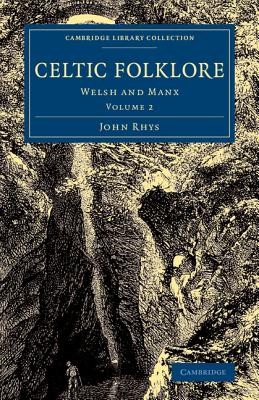
- We will send in 10–14 business days.
- Author: John Rhys
- Publisher: Cambridge University Press
- ISBN-10: 1108079091
- ISBN-13: 9781108079099
- Format: 14 x 21.6 x 1.9 cm, minkšti viršeliai
- Language: English
- SAVE -10% with code: EXTRA
Reviews
Description
John Rhys (1840-1915), the son of a Welsh farmer, studied at Oxford and in Germany, and became the first professor of Celtic languages at Oxford in 1877. His research ranged across the fields of linguistics, history, archaeology, ethnology and religion, and his many publications were instrumental in establishing the field of Celtic studies. This two-volume work, published in 1901, had its beginnings in the late 1870s, when Rhys began collecting Welsh folk tales, several of which appear, with English translations, in Volume 1. Volume 2 analyses recurring Welsh themes, including submerged cities, water spirits and rivers; caves, heroes and treasure; place-names and Arthurian legends. It also considers, in a more global context, topics such as name magic, shape shifting, and the fairy as 'other'. Rhys discusses the difficulties of interpreting folkloric motifs and discovering their origins, and the blurred borders between story and history, myth and superstition.
EXTRA 10 % discount with code: EXTRA
The promotion ends in 22d.18:50:11
The discount code is valid when purchasing from 10 €. Discounts do not stack.
- Author: John Rhys
- Publisher: Cambridge University Press
- ISBN-10: 1108079091
- ISBN-13: 9781108079099
- Format: 14 x 21.6 x 1.9 cm, minkšti viršeliai
- Language: English English
John Rhys (1840-1915), the son of a Welsh farmer, studied at Oxford and in Germany, and became the first professor of Celtic languages at Oxford in 1877. His research ranged across the fields of linguistics, history, archaeology, ethnology and religion, and his many publications were instrumental in establishing the field of Celtic studies. This two-volume work, published in 1901, had its beginnings in the late 1870s, when Rhys began collecting Welsh folk tales, several of which appear, with English translations, in Volume 1. Volume 2 analyses recurring Welsh themes, including submerged cities, water spirits and rivers; caves, heroes and treasure; place-names and Arthurian legends. It also considers, in a more global context, topics such as name magic, shape shifting, and the fairy as 'other'. Rhys discusses the difficulties of interpreting folkloric motifs and discovering their origins, and the blurred borders between story and history, myth and superstition.


Reviews